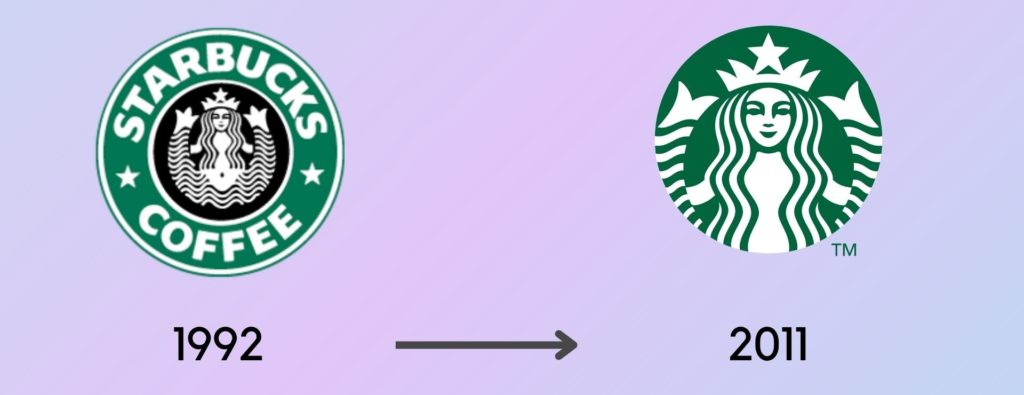A brand’s identity is its essence, something that distinguishes it in a crowded marketplace. It’s the sum of a company’s values, mission, and the emotional connection it forges with its audience. Developing a brand identity is a paramount task as it impacts how consumers perceive and trust a business. However, the business landscape is dynamic, and what worked yesterday may not work tomorrow. In this environment rebranding emerges as a strategic tool to realign a company’s identity with its goals and market demands.
In this article, we dive into the significance of brand identity, explore its concept with real-world rebranding examples, and shed light on the six signs that show when it is time to rebrand.
Table of contents:
The Power of Brand Identity
A brand’s identity is not just a logo, a name, or a tagline. It’s a visual representation of a company’s values and mission. It’s how a company connects with its audience on a deep, emotional level. Think, for example, of Apple’s iconic apple with a bite taken out of it and how it makes people around go crazy. Such a reaction is not a result of a stunning picture but everything that it represents.
Sometimes, the brand’s soul does not align with its physical embodiment. Here a nice rebranding strategy would come in handy. In essence, it is the process of redefining and revitalizing a brand’s identity. It can range from subtle changes in a logo to a complete overhaul of a company’s image, from its name to its values. Rebranding is not a decision to be taken lightly. It requires a deep understanding of a company’s history, mission, and its place in the market.
Additionally, it requires a thoughtful design project workflow, combined with quick and efficient online proofing. Even though we cannot promise you professional designers or groundbreaking ideas, we can definitely provide you with a reliable tool for your approval process. Let us do all the mundane work connected with proofing, and let the ideas flow to create your perfect branding solution!
Sales drop
A significant and persistent drop in sales is often the most glaring and undeniable sign that a company needs to reevaluate its brand. When your products or services no longer resonate with your target audience, sales figures plummet. The first step in addressing this decline is to conduct a thorough internal assessment. Examine your product quality, pricing, and any internal issues that might be impacting sales. If these factors are sound, it’s time to turn your gaze to your brand.

In this case, rebranding offers the opportunity to refresh your image, gain back the trust of the previous audience and acquire the new one. Successful rebranding can breathe new life into your business (and sales, of course) and renew interest by bringing novelty.
Everyone knows about Domino’s pizza, right? The CEO of the company claims that it was a huge success in the 1990s and had considerable growth. However, all of a sudden, thousands of negative reviews complaining about how terrible the pizza is began to appear. They decided that it was time to rebrand. They have changed the recipe, the logo and launched “The Pizza Turnaround” campaign. Now Domino’s revenue has grown from 1.4 billion dollars in 2009 to 4.54 billion dollars in 2022.
The Identity Dilemma
As a company grows and evolves, its mission and values may undergo subtle or profound shifts. It’s essential that your brand reflects these changes and stays aligned with your core values. If your company’s mission and brand have parted ways, rebranding is not merely an option but a necessity to reestablish that vital connection. Because even a slight misalignment can confuse your customers and create a dissonance between what you promise and what you deliver.

A classic example of this is the transformation of Apple from a niche computer company into a tech giant with a broader product portfolio. Apple rebranding was made to embody innovation, simplicity, and elegance, all aligned with their mission to make technology more accessible. This, however, was not represented in their previous logo, which was over-complicated and, honestly, had too many details. No, really, take a look at their first one and tell me you would buy a phone supposed to represent elegance from this company. In Apple’s case, logo rebranding helped them to reflect their new identity and strategy and made it more accessible to the general audience.
Trying to reach a new audience
Expanding or pivoting your business to reach a new or more specific audience requires a reevaluation of your brand. Different audiences have distinct expectations, cultural references, and values. For example, if your core audience is predominantly women, deploying humor that degrades women would be detrimental. Similarly, using the same kinds of jokes in the UK and France may be a bad idea. To cater effectively to a new or specific audience, your brand needs to resonate with them.

Take, for example, the rebranding of Old Spice. What is the first thing that comes to your mind when you hear this name? It’s probably either color red, the state of “being a real man”, or that ad with Isaiah Mustafa on the horse. It seems hard to believe that before 2010 it was considered a brand for old men. Having this need to enlarge the audience, Old Spice went all in and now is considered a must for all those reeeal men.
You Are Not Different
In a saturated market, it’s crucial for a brand to stand out, yet it’s a delicate balancing act. But there may be a time when you see that there isn’t anything you can offer people that is different from the others. And suddenly, your USP lacks all uniqueness – that is a clear sign for you to rebrand.
However, being different doesn’t mean being unrecognizable or alienating for your core audience. A brand needs to strike that perfect balance between being unique and being known. The art of rebranding lies in finding what sets your brand apart and amplifying those unique qualities. It’s about communicating your distinct value proposition and the essence of your brand that makes you special.

A cool example of a rebranding campaign caused by a lack of uniqueness is Starbucks. They were on the top since the very start in 1971, but, I mean, everyone can make cool coffee. And everyone did. Starbucks had to deal with that and start being unique again. So, they elegantly removed the word coffee from their logo and introduced a whole bunch of new non-coffee products. And that absolutely worked.
Strategy Shift
When a business experiences success and growth, its strategy often evolves to meet new challenges and seize new opportunities. Such shifts can entail entering new markets, diversifying product lines, or even a fundamental change in the core business focus. These strategic adaptations demand an updated brand image that aligns with the company’s new direction. Rebranding a business in response to a strategy shift ensures that your brand aligns with the company’s future trajectory, presenting a clear and cohesive identity to customers and stakeholders.

Consider Google, initially a search engine giant, but it has since transformed into a multifaceted tech conglomerate. Investing in things far away from search engines, the company felt the need for a rebranding campaign. This is how Alphabet Inc. was created, allowing Google to maintain its core search business while creating space for other ventures under a unified umbrella. We, commoners, still call it Google, however, it has made it much easier for stakeholders and employees to handle the company’s business.
Negative Image
Scandals and controversies are unfortunate occurrences for any business, tarnishing a brand’s reputation and ruining trust. Negative publicity can have far-reaching consequences, causing consumers to distance themselves from the brand. Rather than surrendering to the challenges, rebranding can be a powerful tool for rebuilding trust and positive sentiment.

Something like that happened to Uber when in 2017, Uber’s previous CEO left the company not being able to stand against the amount of harassment allegations made. Everyone was struggling, the company was on the brink of being closed off. However, the new CEO decided that it was a great opportunity to rebrand and implement new rules and a fines system, along with an advertising campaign that emphasized each person’s safety. Needless to say, Uber rebranding was more than just successful. Harassment incidents are an exception rather than a rule, and the company thrives.
Final takeaway
Rebranding is an opportunity to restore a company’s image, tell a fresh story, and forge deeper connections with your audience. Recognizing the signs that point towards rebranding is the first step toward giving a second life to your brand and ensuring its relevance and success. Be vigilant in monitoring everything that surrounds your company, and be prepared to adapt as the market demands. Most importantly, keep an eye on the community’s response post-rebranding. Embrace this opportunity, and should the first attempt fall short, learn, iterate, and rebrand again to discover new heights of success with the support of tools like Approval Studio, ensuring perfection in every detail.

 TEAM SOLUTIONS
TEAM SOLUTIONS WORKFLOW SOLUTIONS
WORKFLOW SOLUTIONS



 REVIEW TOOL
REVIEW TOOL PROJECT MANAGEMENT
PROJECT MANAGEMENT TOOLS & INTEGRATIONS
TOOLS & INTEGRATIONS
 CLIENT INTERVIEWS
CLIENT INTERVIEWS









